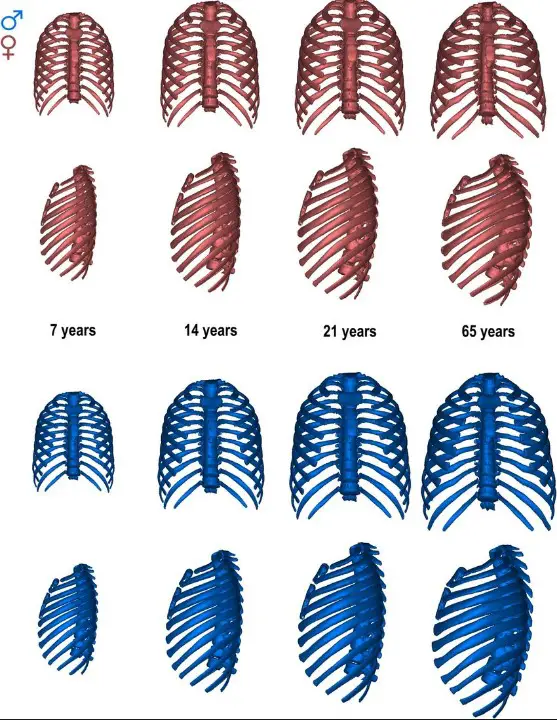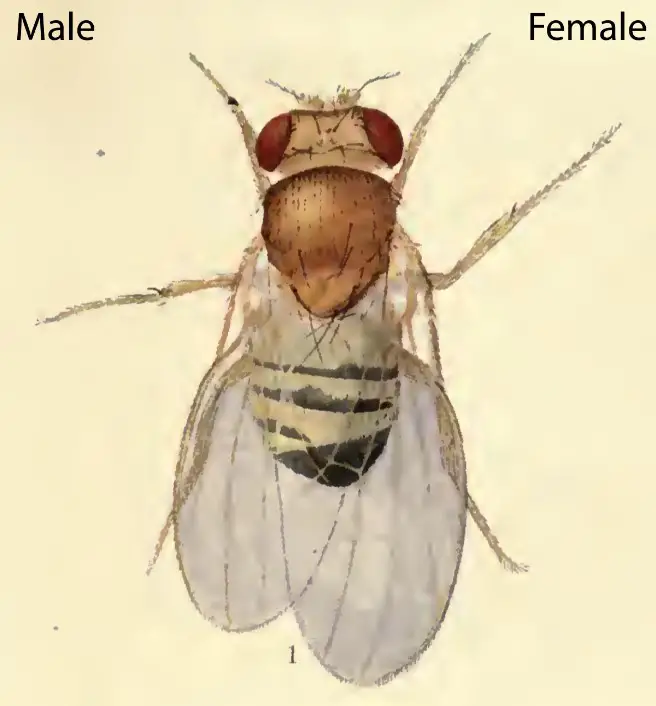Drosophila melanogaster, commonly known as the fruit fly, serves as one of the most extensively studied organisms in genetic research. Its rapid life cycle, ease of breeding, and relatively simple genome make it an ideal candidate for a wide array of biological studies, including genetics, behavior, and evolutionary biology. The ability to distinguish between male and female Drosophila melanogaster is crucial for researchers, enabling precise control over breeding experiments and the study of sex-linked genetic traits.
The difference between male and female Drosophila melanogaster lies in several key areas, including morphological characteristics, genetic makeup, and behavior. Males typically exhibit smaller bodies, darker abdomens with distinct sex combs on their forelegs, and engage in unique courtship behaviors. Females, on the other hand, are larger, have striped abdomens without sex combs, and display specific egg-laying patterns. These differences are underpinned by genetic factors, with the XY chromosome system playing a central role in determining sex.
Understanding the distinctions between male and female fruit flies extends beyond mere identification. It opens up pathways to exploring genetic inheritance, understanding evolutionary mechanisms of sexual dimorphism, and uncovering the roles of specific genes in development and behavior. As we explore these differences in depth, we unravel the complexities of genetic research and gain insights into fundamental biological processes that have implications far beyond the tiny world of Drosophila melanogaster.

Basic Identification
Morphological Differences
Size and Shape
One of the most straightforward ways to distinguish between male and female Drosophila melanogaster is by observing their size and shape. Generally, males are smaller and have a more slender body compared to females, which are larger and rounder. This size difference is noticeable and serves as the first clue in identifying the sex of the fruit flies.
Color Variations
Another distinguishing feature is the color variation between the sexes. Male Drosophila melanogaster often exhibit a darker abdomen, which is not only a sign of their sex but also plays a role in the mating process. Females, on the other hand, tend to have a lighter coloration, which can vary depending on their age and reproductive status.
Abdominal Patterns
The abdominal patterns also differ significantly. Females display a more pronounced striped pattern on their abdomen, which is essential for researchers to note when identifying the sex of these flies under a microscope or magnifying glass. Males may show a less distinct pattern, with their darker abdomen overshadowing the stripes.
Anatomical Markers
Sex Combs in Males
One of the most unique and fascinating anatomical markers in Drosophila melanogaster is the presence of sex combs on the forelegs of males. These small, bristle-like structures are used during mating to grasp the female, making them an essential feature for not only identification but understanding mating behaviors.
Abdominal Segmentation
Both males and females have segmented abdomens, but the segmentation patterns can help differentiate them. Males typically have fewer visible segments due to the last abdominal segments being fused or less pronounced. In contrast, females show a clearer segmentation, which is related to their reproductive anatomy.
Behavioral Traits
Mating Rituals
Courtship Behaviors of Males
Male Drosophila melanogaster are known for their elaborate courtship behaviors, which include a series of actions designed to attract females. These behaviors can include vibrating their wings to produce a mating song, performing a specific dance, and even tapping the female with their legs. These actions are not only fascinating from a behavioral standpoint but critical for successful mating.
Female Response Mechanisms
Females, in response, exhibit specific response mechanisms. They may accept the courtship by remaining stationary and allowing the male to continue, or they may reject the male by walking away or kicking him. Understanding these responses is key to studying mating preferences and reproductive success in fruit flies.
Reproduction Strategies
Egg-Laying Habits of Females
Female Drosophila melanogaster have distinct egg-laying habits, choosing specific sites to deposit their eggs based on environmental cues and nutritional availability. This behavior ensures the offspring’s survival and is a critical aspect of their reproductive strategy.
Male Territoriality
While less discussed, male territoriality plays a role in reproduction as well. Males may defend certain areas where females frequently visit to lay eggs, demonstrating a form of territorial behavior that influences mating success.
Genetic Basis of Sex Determination
Chromosomal Differences
XY System in Drosophila
The XY system is fundamental to sex determination in Drosophila melanogaster, with males possessing one X and one Y chromosome (XY) and females having two X chromosomes (XX). This chromosomal difference is the genetic basis for the morphological and behavioral traits that distinguish males from females.
Role of the Sxl Gene
The Sxl gene plays a pivotal role in female development. Its activation leads to a cascade of gene expressions that result in the development of female-specific traits and inhibit the development of male characteristics. The absence of Sxl gene activation in males allows for the male pathway of development.
Gene Expression
Impact on Physical Development
The difference in gene expression between males and females affects not only their physical development but also their behavior and reproductive strategies. These genetic factors are integral to the sexual dimorphism observed in Drosophila melanogaster.
Behavioral Genetics
Furthermore, behavioral genetics in Drosophila melanogaster reveals how specific genes influence behavior. Studies on mating rituals, courtship, and aggression have all linked back to genetic expressions, underscoring the importance of genetics in understanding the complex behaviors of these organisms.

Research Applications
Genetic Studies
Use in Sex-Linked Inheritance Experiments
Drosophila melanogaster has been instrumental in unraveling the mysteries of sex-linked inheritance. Due to their clear differentiation between male and female, coupled with a short generation time, fruit flies serve as an excellent model for observing how traits are passed down through X and Y chromosomes. This research has shed light on various genetic conditions and diseases, providing valuable insights into human genetics.
Mapping of Traits
The mapping of traits in Drosophila has significantly advanced our understanding of genetics. Through crossbreeding experiments, researchers have been able to locate specific genes on chromosomes and understand how these genes control physical and behavioral traits. This work has been crucial in the field of genomics, helping to lay the groundwork for the Human Genome Project and similar endeavors.
Evolutionary Insights
Sex-Specific Evolutionary Strategies
Drosophila melanogaster offers a window into sex-specific evolutionary strategies. These strategies, which include mating rituals, egg-laying preferences, and even life span, highlight the different ways in which males and females have adapted to ensure their survival and reproductive success. By studying these differences, scientists can gain a deeper understanding of evolutionary biology.
Sexual Selection in Drosophila
Sexual selection is another area of study made accessible through the fruit fly. This process, where traits become more or less common depending on their impact on an individual’s mating success, has been observed in Drosophila’s mating rituals and courtship behaviors. Such studies illuminate the intricate dance of selection and adaptation that shapes species over time.
Environmental Influences
Temperature Effects
Impact on Sex Ratio
Temperature has a profound effect on Drosophila, particularly in terms of the sex ratio of offspring. Research has shown that varying the temperature at which fruit fly eggs are incubated can skew the ratio of males to females. This phenomenon, known as temperature-dependent sex determination, highlights the sensitivity of Drosophila to their environment and provides a fascinating insight into developmental biology.
Behavioral Modifications
Temperature not only affects the sex ratio but also induces behavioral modifications in Drosophila. Flies kept at higher temperatures tend to be more active, displaying increased mating and foraging behaviors. Conversely, lower temperatures can lead to lethargy and a decrease in these activities. This adaptability is a testament to the fruit fly’s resilience and the impact of environmental factors on biological processes.
Diet and Lifespan
Nutritional Influences on Reproduction
The diet of Drosophila melanogaster plays a crucial role in their reproductive success. Studies have shown that a diet rich in certain nutrients can increase fertility and the overall number of offspring. Conversely, a lack of nutrients can lead to reduced fertility rates. This link between diet and reproduction underscores the importance of environmental factors in genetic studies.
Lifespan Differences Between Sexes
Interestingly, the lifespan of Drosophila melanogaster can also vary between the sexes, influenced by both genetics and diet. Generally, females tend to live longer than males, a difference that can be exacerbated or mitigated by dietary choices. The study of these lifespan differences provides valuable insights into aging, metabolic processes, and how diet influences longevity.
Frequently Asked Questions
Why Study Drosophila Melanogaster?
Drosophila melanogaster offers invaluable insights into genetic research due to its short life cycle, ease of genetic manipulation, and the high degree of homology between its genes and those of humans. Studying this organism helps scientists understand genetic diseases, developmental biology, and the fundamentals of heredity and evolution.
How Can You Tell Male from Female Drosophila?
Male Drosophila can be identified by their smaller size, darker body color, and the presence of sex combs on their forelegs. Females are generally larger, have a lighter abdomen with distinct striping, and lack sex combs. These physical differences are clear and consistent, making gender identification straightforward.
What Are the Genetic Differences Between Male and Female Drosophila?
The primary genetic difference lies in the sex chromosome composition, with males having one X and one Y chromosome (XY) and females having two X chromosomes (XX). The Sxl gene plays a crucial role in female development by promoting female-specific patterns of gene expression, while its absence in males leads to male-specific development.
How Do Male and Female Drosophila Behave Differently?
Male Drosophila exhibit unique courtship behaviors, including singing, wing vibration, and chasing females, to attract mates. Females, conversely, exhibit selective mating behaviors and are responsible for laying eggs. These behavioral differences are deeply rooted in their genetic makeup and are critical for the species’ reproductive strategies.
Conclusion
The distinction between male and female Drosophila melanogaster is not just a subject of academic curiosity but a cornerstone of genetic and evolutionary biology research. Through the detailed examination of their differences, researchers can probe the intricacies of genetic inheritance, understand the mechanisms driving sexual dimorphism, and explore the genetic basis of behavior. The study of these tiny organisms offers profound insights into biological principles that apply across the vast diversity of life.
By harnessing the power of Drosophila melanogaster in scientific research, we gain a better understanding of ourselves and the natural world. The differences between male and female fruit flies, while seemingly minute, are pivotal in unlocking the mysteries of life at the genetic level, demonstrating the incredible value of this modest organism in advancing the frontiers of science.

